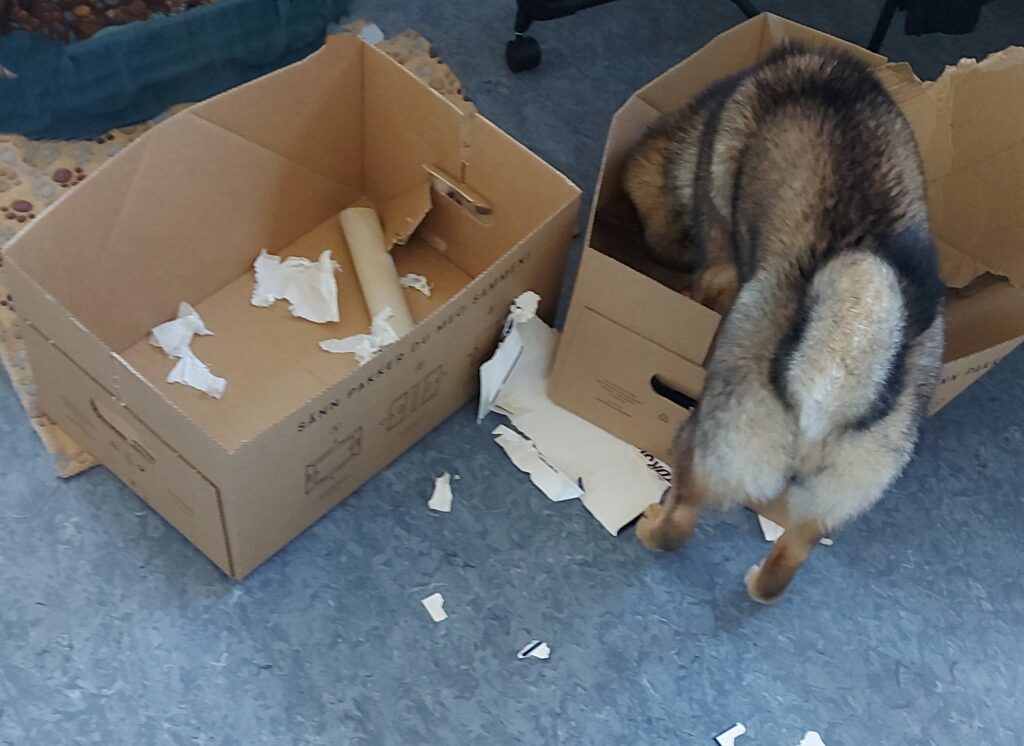Mental activity
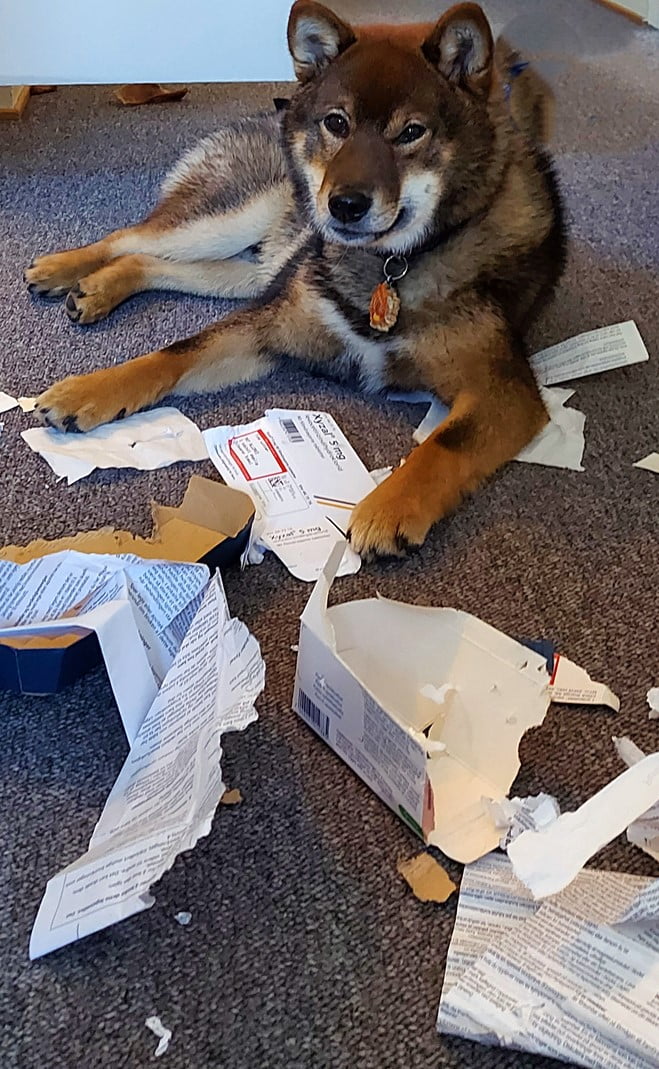

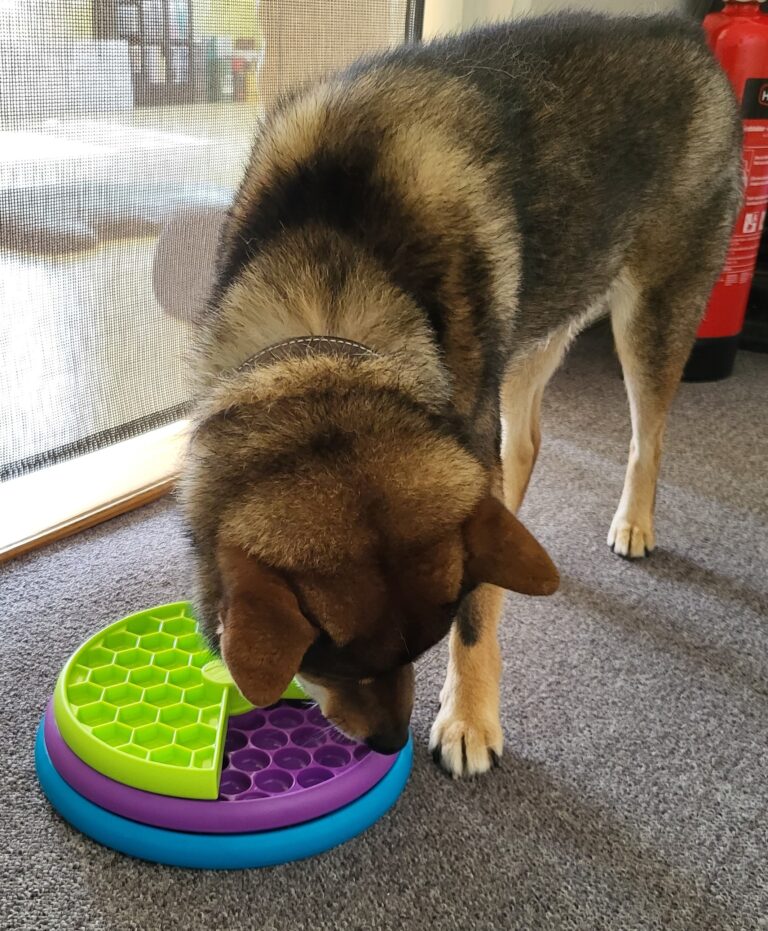
Due to the freezing temperatures in recent days here in Norway, I'm writing about mental activation indoors.
For me, mentally activating dogs indoors or outdoors is essential in dog training. It is more important to me that my customers mentally activate their dogs than if they walk with their dogs for 2 hours.
What is mental activation?
The brain of our dogs, just like ours, is a complex organ, and for it to function as well as possible, it must be stimulated, for example, by Mental activity. But not only for the brain but also for self-confidence and the feeling of success when something has been solved is significant for the development of our dogs and lays the foundation for a safe and calm dog, especially in puppyhood.
Mental activities are challenges that our dog can solve alone or with us, e.g., to get to the treat. But we must remember that it should be accessible initially because dogs learn better when they succeed than when they fail. Therefore, we should always choose the activities to be challenging but ensure that our dog has a sense of achievement at the end. It is also important to mention that it is worth choosing from different activities and continuously rotating them so that it is not too boring for the dog. If we do an activity for too long, at some point, it is no longer a challenge for the dog, and so it becomes less of an activity and more of an opportunity to get treats.
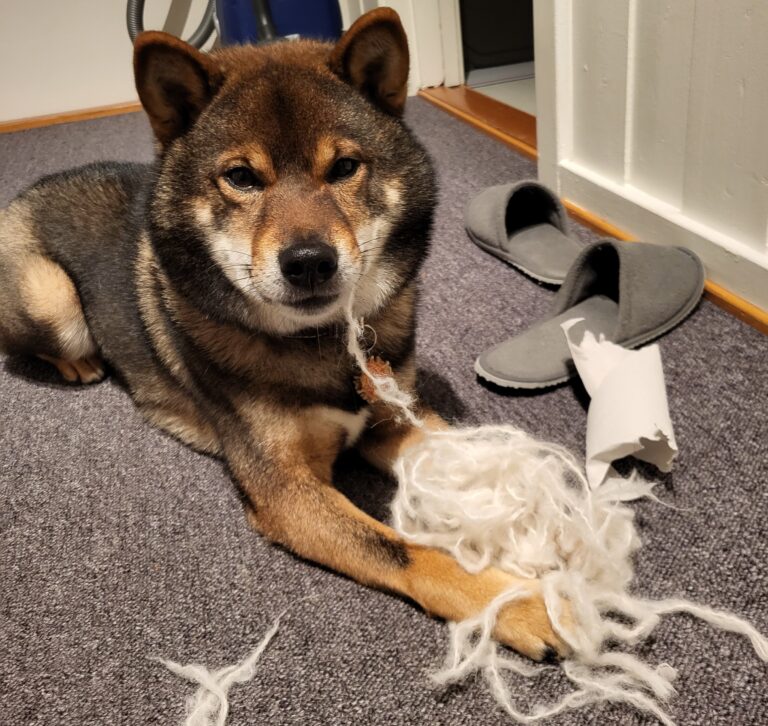
Why should I mentally activate my dog?
As mentioned above, mental activities stimulate the brain, and the success of solving them gives dogs a positive experience with challenges. If we practice this in puppyhood, we will get a self-confident dog that can remain calm in everyday situations and solve problems. Nothing is more admirable than watching Akito think to solve a challenge and then seeing him light up when he does it.
Aren't walks, throwing a ball, and other activities also good mental activities?
Mental activities can be incorporated into a walk, and I recommend doing so. Other activities, like throwing a ball/stick and jogging, are not mental activities and shouldn't be done, but this is a different topic I will address in another post.
What mental activities can I do?
Here are the best 12 tips I do regularly with Akito, and thanks to his perceived very high IQ, I activate myself mentally because I have to think about how to make it even more difficult for him. My tips include homemade and purchased items intended to mentally stimulate dogs.
1. Towels can either be folded individually or tied together in a braid to hide treats the dog has to get to.
2. Sniffing mats are available in different types and difficulty levels, and there are also good videos explaining how to make one yourself.
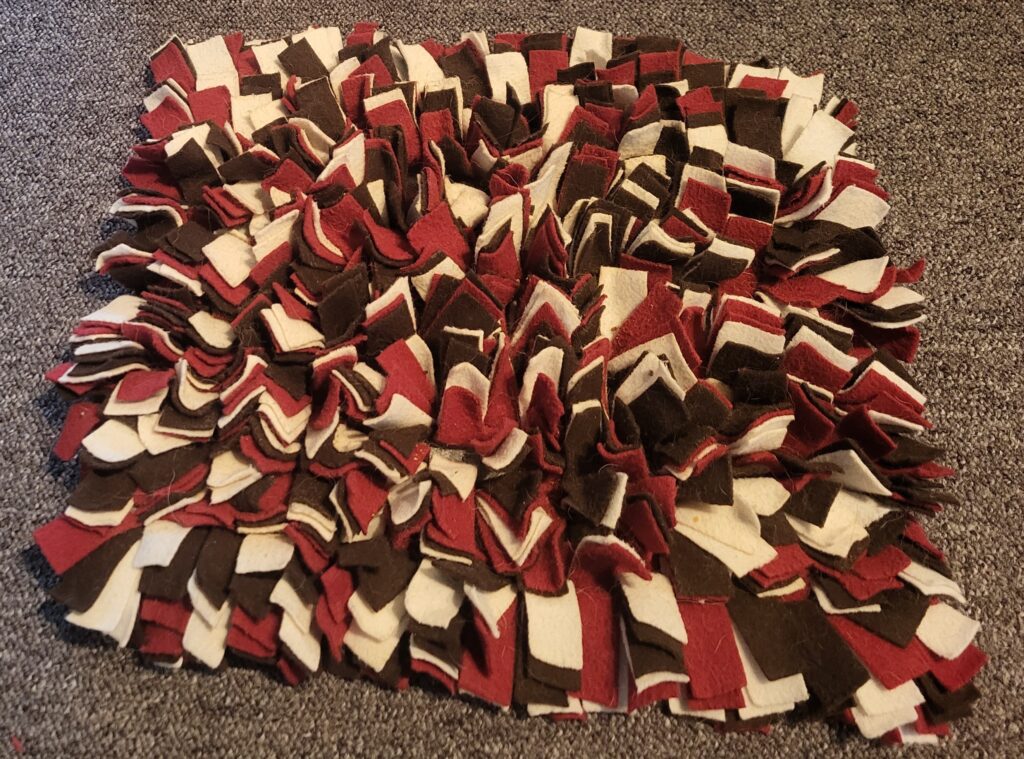
3. Toilet paper rolls or kitchen paper rolls that can be closed on both sides and filled with a few treats. You can then wrap the treats in paper or newspaper to make it even more challenging to get to them.
4. Kong wobbler can be filled with treats, and the dog has to try to knock it over so that something comes out. You need space for it, and you should be careful that the wobbler doesn't hit anything that could break and fall over.
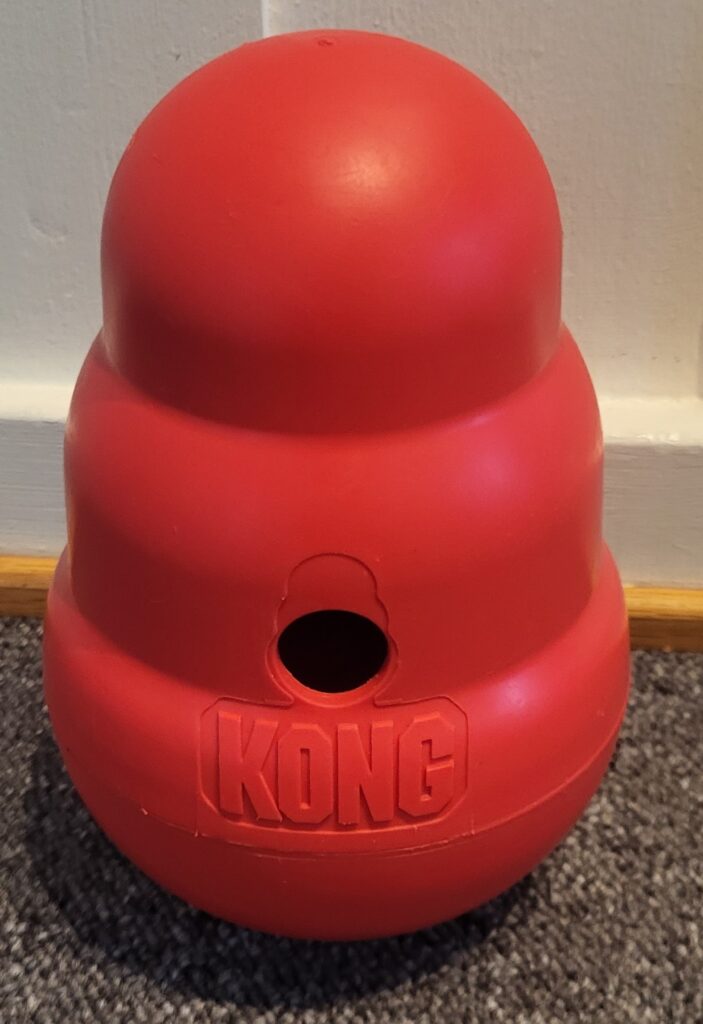

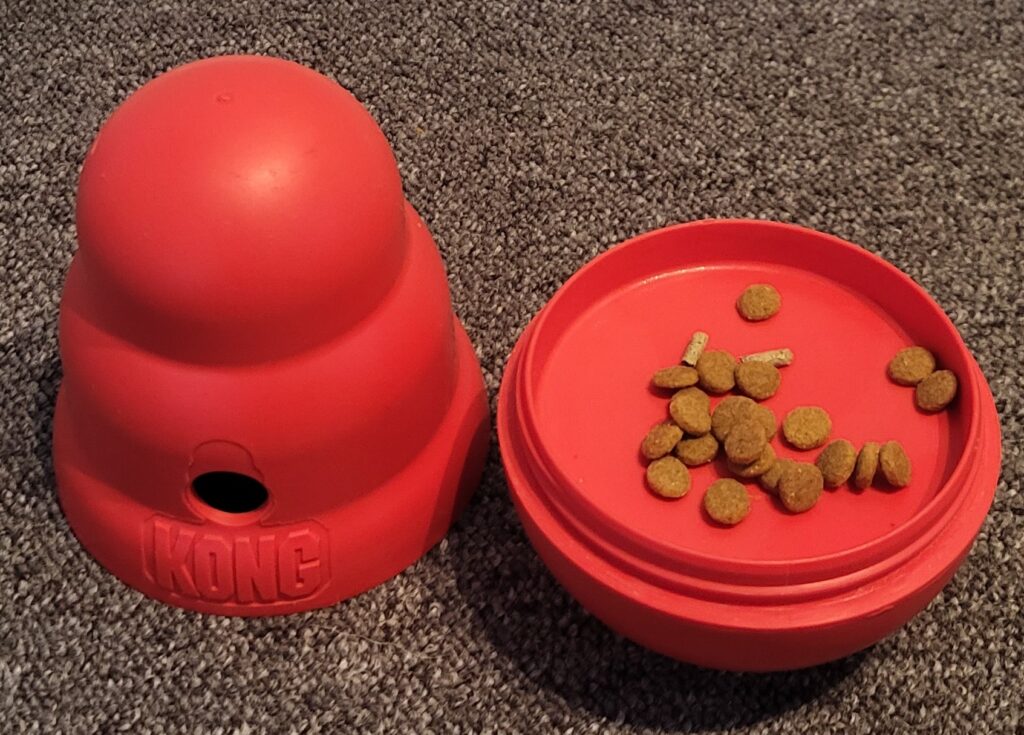
5. Socks: at some point, everyone has a broken sock or needs to be replaced. They are perfect for hiding treats, individually or made up of several braided socks, which are always a hit.
6. Kong gyro is similar to wobblers; you can put treats in there, and the dog can then try to get the treats out. It's smaller and not as loud as the wobbler sometimes is.

7. Simply scattering treats or dry food can be done both indoors and outdoors. This activity is at the top of Akito's list, as he loves to pick his own food. If it's not too cold, I also do it in the snow, which makes it a little more complicated.
8. There are different puzzle games for dogs, and there are so many that it is difficult to mention them all. Here is a selection that Akito has and that I am happy with.
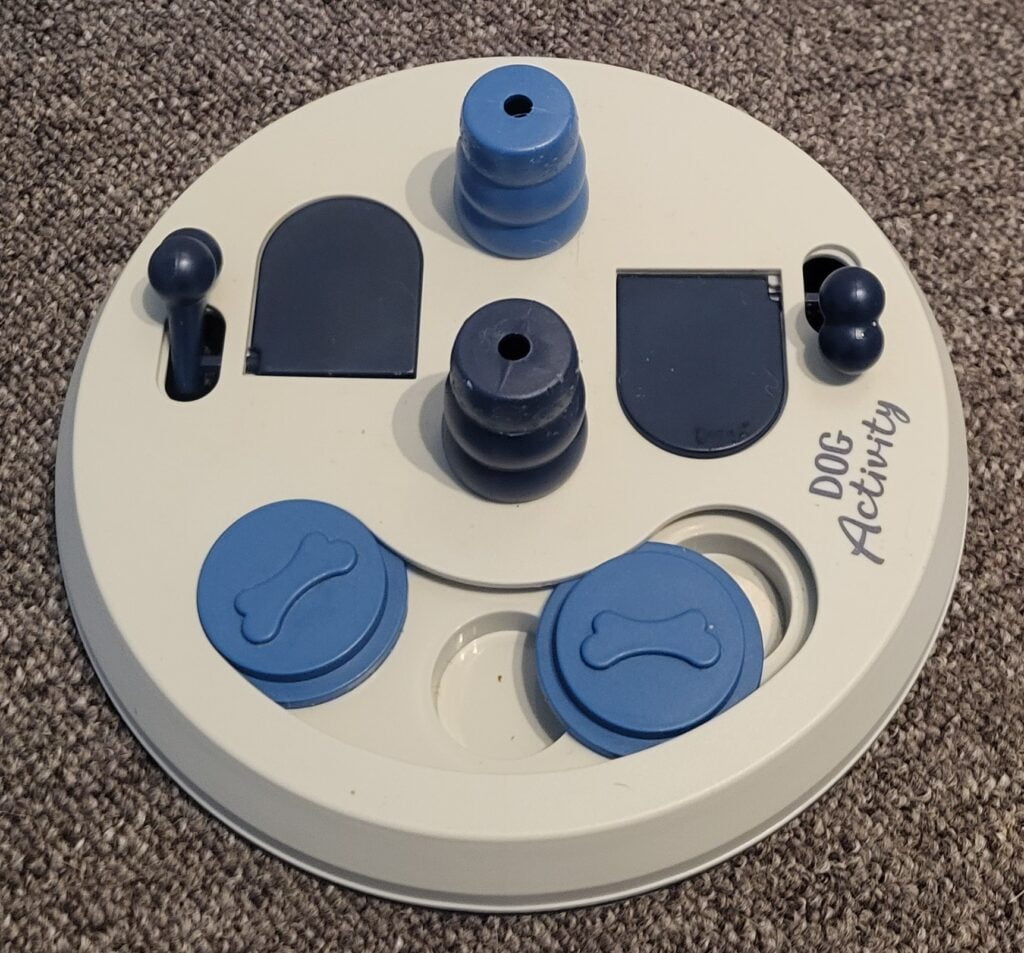

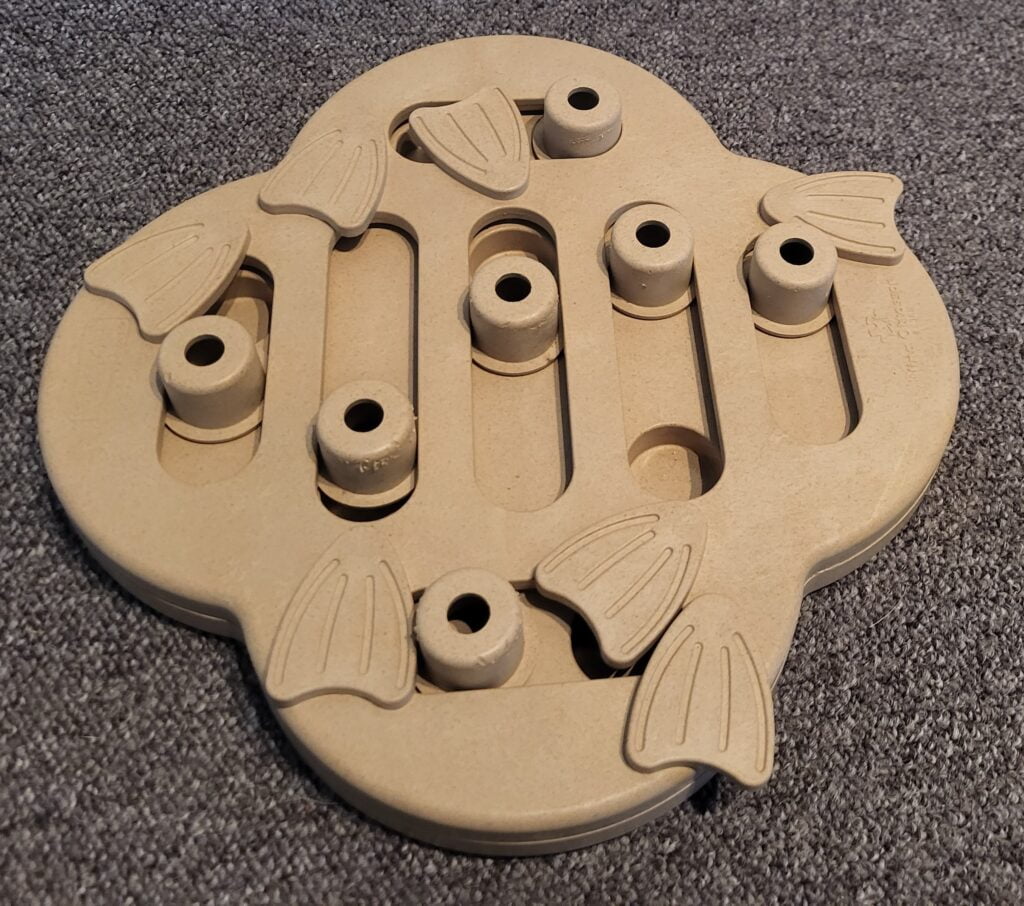
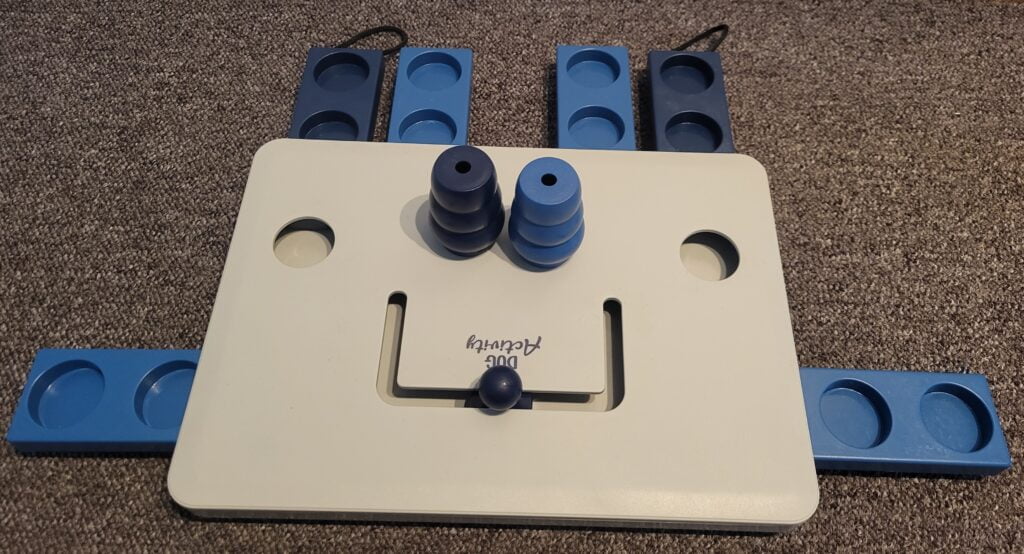
9. Place treats in a plastic bottle. Ensure the opening is larger at the beginning so it can be simple.
10. Muffin boards that have treats on the bottom are then hidden with cardboard, paper, or balls (if you have a ball junkie, please don't use balls).
11. Any cardboard where you can hide treats and the dog has to try to get to them.

